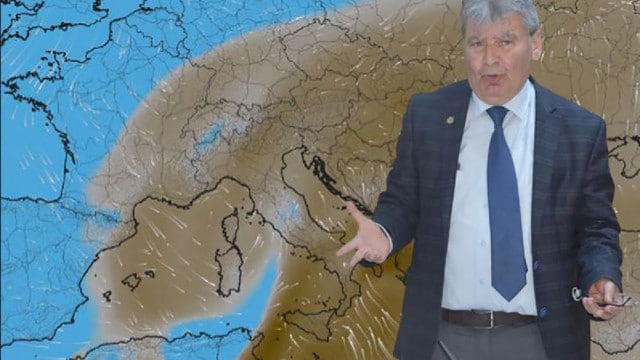Sahara sand, which the winds brought to Europe in April, provides a very good shelter for viruses. Thus, it increases the risk of infection with COVID-19. The Turkish professor warned about this.
The sand from the desert also covered Turkey. It will continue its impact, increasing the risk of accelerating COVID-19 cases in the area, said Hussein Toros, a meteorologist at Istanbul Technical University.
The Turkish State Meteorological Service warned residents to take action against heavy dust clouds over the weekend.
“We recommend everyone, whether old or young, to stay indoors. Keep the windows tight, “said Hassan Bayram, head of the Turkish Lung Association.
Especially patients with chronic diseases and cardiovascular are at risk, Bayram said that inhaling dust can cause headaches, flu or sore throats.
All experts advise people to wear face masks if they have to go out. Well-known meteorologist Orhan Shen is one of them who suggests that there is no need to panic. “We expect rain on Sunday,” he said, marking the end of the desert storm.
Dokuz Aylul University professor in the western province of Izmir and climatologist Dogan Yashar have warned of an increase in coronavirus cases due to the desert storm.
Yashar stressed the importance of desert dust: “It contains multi-layered silicate. Every year, approximately 2 billion tons of dust leave the deserts and fertilize the world. This is good for agriculture, which leads to increased yields. The more desert dust comes, the higher the yield. From the end of March and the beginning of April, when the desert dust is observed, nature wakes up. This creates a great agricultural and biological wealth, but desert dust also provides a very good shelter for viruses. Layered silicate is usually present in very small proportions in the air, but this ratio increases when desert dust is transported.
When an infected person sneezes, the virus reaches the ground in three seconds. But the cloud of dust in the air helps him stay for hours, the doctor said, reminding people to wear masks. This has been proven by the World Health Organization, he said.
Prof. Dr. Yashar recalled: “The dust brought from the Sahara Desert in 2020, also began to come to our country in late March and early April. Then we warned our citizens. We have stated that this is a dangerous situation. In April 2020, the Covid-19 record of 5,000 people was broken. We made the same warning in 2021. The number of cases then reached a record 63,000 with coronavirus on April 14. Here and today again desert dust came to our country. The spring heat has begun. The same event will be repeated. “The environment is very conducive to the spread of the virus,” he said.












